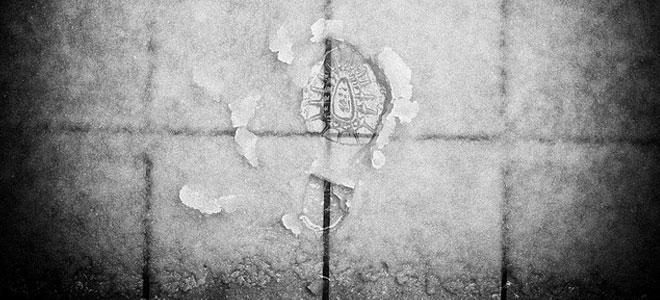Floor care is an important part of maintaining a facility’s image and safety. It’s a big task year-round, but it can be a challenge particularly in the winter. Slush and salt can make for an unpleasant walkway, turn people away, lead to slips and falls, and cause significant damage to your floors.
To make winter floor maintenance more productive and improve the life and safety of your floors, here are some Dos and don’ts to keep in mind.
Outdoors (for the sake of this article, sidewalks and parking lots count as flooring.)
- DO use ice melt to prevent slips and falls.
- DON’T just throw ice melt down. You have to spread it evenly. Consider using a push or hand spreader.
- DO use the right size and type of ice melt. Using a coloured ice melt like Clean & Green™’s green pellets allows you to see it better on the ground and not overuse it, and if the pellets are too small or big, they won’t work properly.
- DON’T use ice melt in place of shovelling properly. Having clear paths is important for safety.
- DO err on the side of caution. It pays to be prepared and aware. You may not think it’s that slippery outside, but someone may be wearing worn shoes and slip easily. Putting ice melt out just in case can save you from hefty lawsuit fees.
Entranceways
- DO have entrance matting. 80 per cent of dirt, dust, and moisture can be trapped in matting so it doesn’t get tracked further into your facility.
- DO use entrance matting as floor protection. It’s a lot easier and cheaper to replace a carpet than it is to strip, recoat, or replace flooring.
- DON’T just use any sized mat. 15 feet lengthwise is the recommended size to capture most of the debris/moisture, but the bigger the better.
- DO customize your entrance matting to enhance your facility’s appearance. You can get colours, logos, or messaging made into matting so your dedication to floor care and safety is on brand while you make an impactful impression.
- DON’T use a regular vacuum to clean your dirty/wet mats and entrance ways. Due to snow or slush, you’ll need a wet vac. And having an air blower to dry carpets/floors faster is also a good idea.
- DO tend to that area several times a day to ensure that the facility always looks its best and that there are no opportunities for accidents to occur.
Inside your facility
- DO use the correct products to safely remove any white salt reside from floors, carpets, and metal frames. Winterinse™ or Haze Away are great products for eliminating this and restoring floors to a state of cleanliness.
- DON’T leave floors/carpets wet, no matter how close to the doorway. This could damage the floors or lead to slip and fall accidents.
- DO use the right tools (double cavity mop bucket, wet floor sign…) when dealing with wet floors so you remove the hazard quickly, safely, and without spreading dirt and contaminants around unknowingly.
- DO use a floor scrubber instead of a mop/bucket (assuming you have the space) to increase productivity.
Victoria Donovan is the digital marketing coordinator at Swish Maintenance Ltd, a leading distributor of sanitation product solutions, equipment and service in Canada and the U.S.








